
11 minute read
Virtual fencing
Virtual fencing to protect Tasmanian Devils
Waratah-Wynyard Council has worked with the Sisters Beach Community Association to install “virtual fencing” along the road through Rocky Cape National Park into Sisters Beach, with the aim of preventing Tasmanian Devils from becoming road-kill.
One hundred high-tech ‘beepers’ spaced fifty metres apart have been staggered along both sides of the road. Car headlights activate the units which then make a loud noise to alert animals that traffic is approaching. They act like a fence to reduce the number of animals on the road.
Near Arthur River on the west coast, a threeyear trial of virtual fencing was carried out between 2014 and 2017. Researchers from the Save the Tasmanian Devil Program estimated that road-kill was reduced by half in areas with the fencing installed, compared to areas without.
Unless you are driving slower than 40 km/hr (which is advised between dusk and dawn on some roads due to the high incidence of road-kill), animals don’t have time to hear your car coming and get out the way. Hopefully the devils, quolls and other wildlife of Rocky Cape NP now have more of a chance.
To find out more visit the Waratah Wynyard Council website: www.warwyn.tas.gov.au
Display planter box at 14 days post seeding.
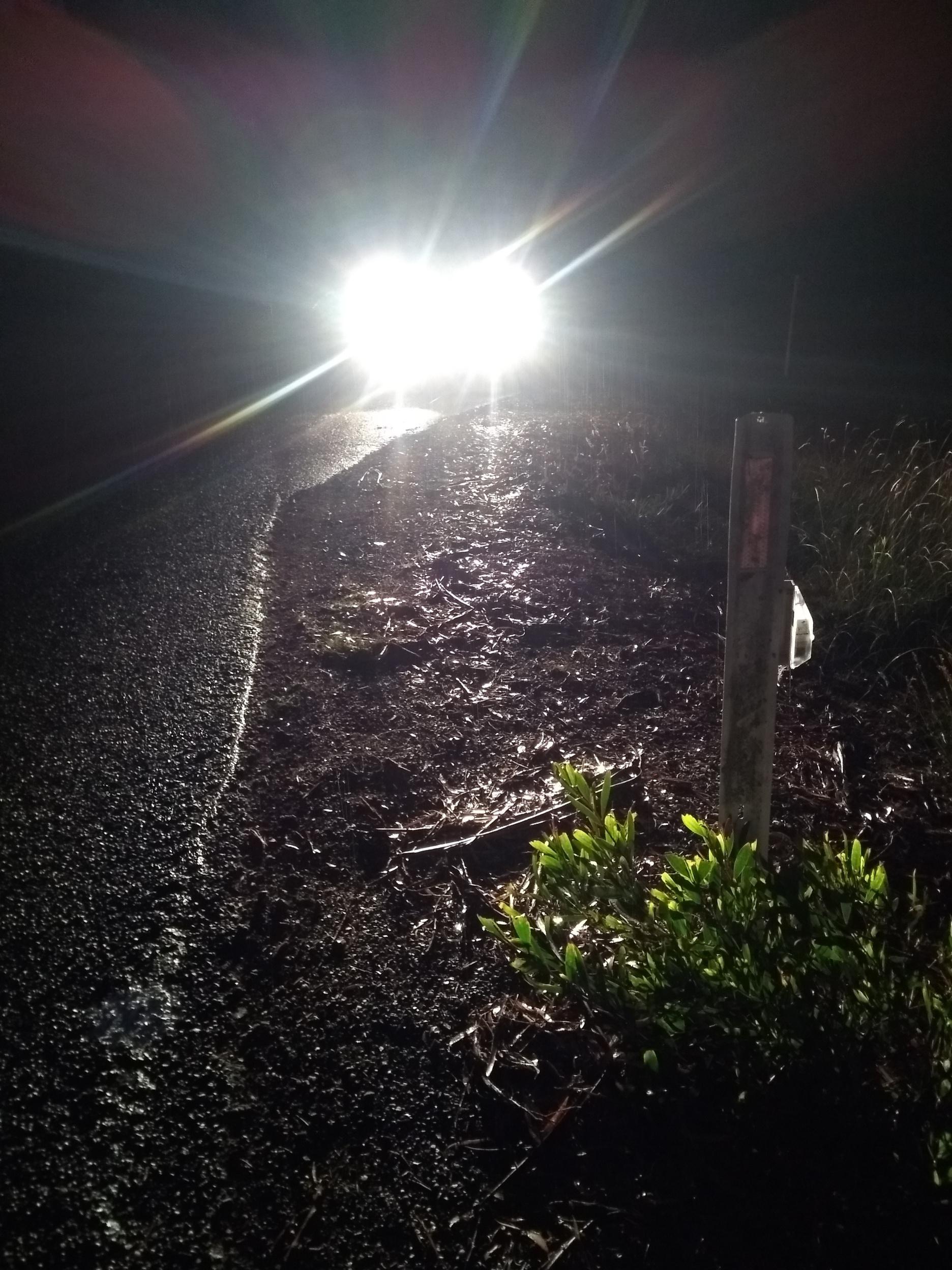

Rubicon Rice Grass project update
Rice Grass is a threat to the health of the Rubicon estuary. It spreads rapidly and is a troublesome aquatic weed. Rice Grass can prevent boat access for fishing, recreation and aquaculture. It has impacts on fish and shorebird habitat, traps sediment and restricts tidal flow.
Weed contractors have started spraying Rice Grass on the eastern side of the Rubicon estuary. Follow-up weed treatment is complete at Narawntapu National Park. Initial weed treatment is continuing in a southerly direction at North East Arm and Brown’s Creek towards the Rice Grass containment line at Eagle Point. Rice Grass control has been delayed due to wet and windy weather. Spraying can only be done at low tide and in light wind conditions. The next stage of the works plan is to start Rice Grass treatment on the western side of the estuary at Port Sorell and Squeaking Point in February and March 2021. We are hoping for suitable weather conditions at low tides to complete this season’s works program.
If you would like more information about the Rubicon Rice Grass project or the Coastal Saltmarsh Recovery project at Circular Head, contact Anna Wind, Environment Project Coordinator, Cradle Coast Authority by email awind@cradlecoast.com or call 0429 804 449.
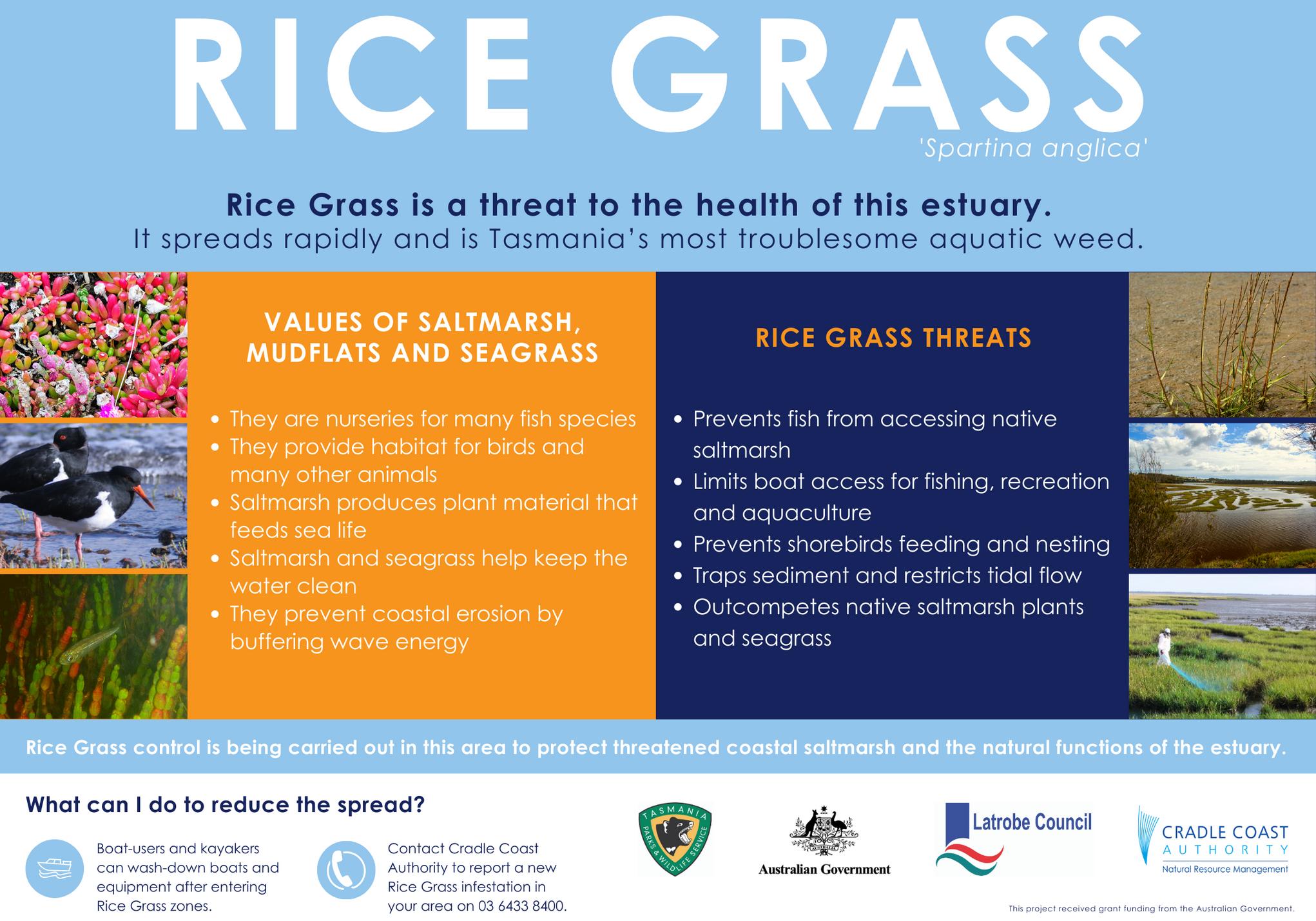
Look out for these Rice Grass signs that will be installed soon at Port Sorell, Squeaking Point, Narawntapu National Park and Smithton.
CCA launches new toolkit to help protect Little Penguins
A new citizen science-based toolkit was recently launched by Minister for Primary Industries and Water, the Hon. Guy Barnett, and Cradle Coast Authority CEO, Daryl Connelly.
Funded by the Tasmanian Government and developed by CCA’s NRM team, the toolkit will help land managers and community groups monitor Tasmania’s Little Penguin populations and manage threats to their colonies. The toolkit provides guidance on survey methods that community groups can use to monitor changes to penguin populations in their local area. It also provides methods to assess the Little Penguin habitat potential of an area, as well as ways to effectively assess current and future threats to colonies.
Data collected using these methods can be provided to the Tasmanian Government through a dedicated email address to improve knowledge of Little Penguin populations and distribution around the state.
CCA CEO, Daryl Connelly, said that Cradle Coast Authority and its Member Councils are committed to improving the environment.
“Like many of our NRM projects, this project is all about taking care of our region’s unique wildlife. Not only is it the right thing to do, but healthy Little Penguin populations also contribute to our region’s tourism appeal and our ‘clean, green’ image. ” said Mr Connelly. Mr Connelly said that everybody can do their bit. “Slow down at night, keep your dog on a leash where necessary, keep your cat inside and stay off those parts of the beach where penguins may be nesting, ” he said.
CCA would like to thank the many community groups, other organisations and volunteers who made this project a success, as well as the Tasmanian Government for their financial and other support. The toolkit, which is endorsed by the Tasmanian Penguin Advisory Group and has been reviewed by DPIPWE wildlife experts, is available at www.cradlecoast.com/cradle-coast-littlepenguin-toolkit/
If your community group is working in penguin habitat and would like to get involved in LIttle Penguin surveys, contact Hannah Sadler, NRM Engagement Officer hsadler@cradlecoast.com

(L-R): Daryl Connelly, CEO CCA, Dr Perviz Marker, Tasmanian Penguin Advisory Group and CCA NRM Committee member; Felix Ellis, MP; Anna Wind, Environment Project Coordinator, CCA: Robbie Walsh, Mayor, Waratah Wynyard Council and the Hon. Guy Barnett, MP.
Display planter box at 14 days post seeding.

Microchipping your pets
A vet microchips a kitten.

In February, the West Coast Council and RSPCA partnered up and provided a discounted microchipping day in Queenstown. It was great to see so many owners bringing in both dogs and cats.
Microchipping is already mandatory for dogs and with the recent changes to the Cat Management Act it will soon be mandatory for cats.
Having your pet microchipped is very important as it provides them with permanent identification if they ever lose their collar and ID tag. Whether your dog gets out of your yard, runs away during a walk or your cat gets lost, having them microchipped can be a lifesaver. Councils, vets and cat management facilities can scan your pet and let you know they have been found and are safe. Microchipping your cat will also help them if they get trapped during a cat control project. Councils can immediately scan your cat for a microchip, identify them as an owned pet cat and release them on the spot. This will eliminate the chance that your cat will be taken to a cat management facility.
If you haven’t already microchipped your pet, get in touch with your local vet and make an appointment. It is a very quick, safe and easy procedure.
Soil carbon in the news
Recent policy announcements about "soil organic carbon" have got farmers talking. What opportunities are out there?
In Australia, agriculture currently accounts for around 15% of our greenhouse emissions, but with projected growth in farm gate output this could well increase.

At the same time, we are aiming for our overall emissions to reach net zero by 2050, and the government’s emissions reduction Technology Investment Roadmap highlights carbon sequestration in agricultural soils as a significant part of this strategy, suggesting that improving land management practices on agricultural land could capture and sequester up to 90 million tonnes of CO2 per annum (or 17% of our total annual emissions).
Increasing the soil carbon concentration (in the form of organic material) can improve farm productivity and crop yields through better nutrient and water retention, and boost resilience to drought and erosion.
In fact, there are already mechanisms available for farmers to earn carbon credits (translating to cash) from soil carbon and tree carbon storage offset projects (as well as via other methods such as herd methane reduction). There are several grower groups (e.g. Regenerative Agriculture Network Tasmania and Farmers for Climate Action) and companies like Carbon Farmers of Australia set up to consult and advise about these types of projects. There are plenty of resources available about the techniques that could store more carbon in the soil.
If that doesn’t sound good enough, there are also emerging incentives at the market end of the production line: consumers who care about the climate impacts of their dietary choices.
For example, Sam and Stephanie Tretheway from Deloraine recently launched their “climate-friendly” beef products, packaged in home-compostable plastic-free bags, and produced on a property where the management practices are regenerative, aiming to draw down carbon dioxide from the atmosphere and store it in the soil.
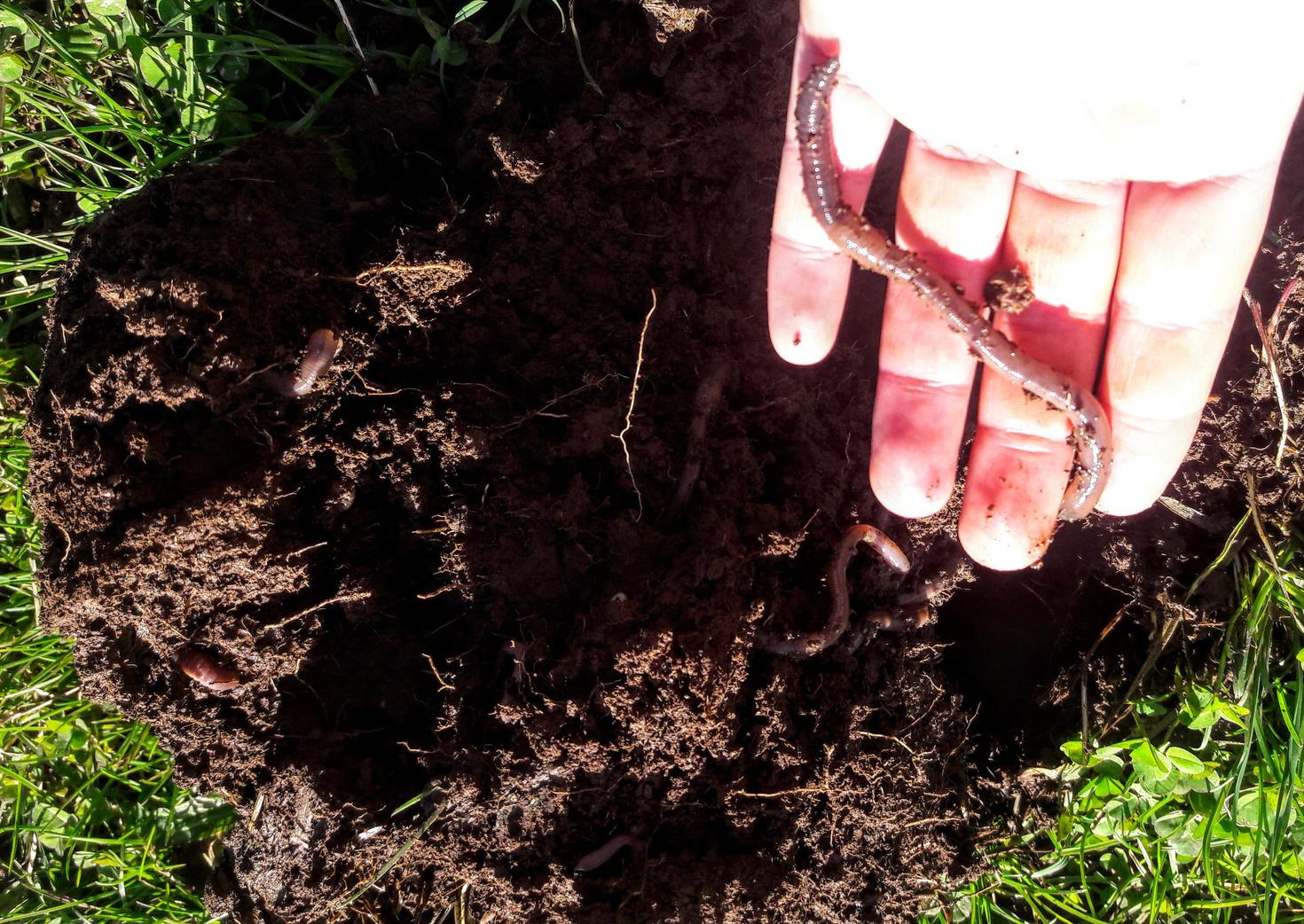
So why isn’t everyone doing it?
This boils down to two problems: permanence and measurement.
Criticism of soil carbon storage as a climate change solution has focused on the fact that weather events can very quickly remove soil carbon that may have built up over years. There are microbial processes at work in healthy soil that are tricky to understand and can result in release of nitrous oxide (another greenhouse gas). And there are off-farm and lifecycle impacts that sometimes aren’t calculated.
The biggest barrier is accurate measurement of changes to soil carbon. New technologies are emerging, such as affordable hand-held soil probes and remote sensing of regenerative practices, but current methods are complex and cost-prohibitive. The government aims to reduce the cost of soil carbon testing from $30 per hectare to $3 per hectare.
With all this research, policy, market, industry and community action, it seems certain that soil carbon storage will increasingly be in the spotlight.

Display planter box at 14 days post seeding.
Weed Action Fund
The Tasmanian Government’s $5 million Weeds Action Fund has announced 26 successful applicants for projects to be funded in its latest $200,000 small grants round, including one project led by Central Coast Council, which will bring five north-west Councils together to work collaboratively on the management of Spanish Heath across municipalities.
The Tasmanian Weeds Action Fund is a Tasmanian Government initiative, funded for five years from 2018-19. The funds are invested by farmers and other community organisations to tackle weeds that are impacting valuable agricultural and environmental assets. Cradle Coast Authority is supporting NRM North, NRM South and Biosecurity Tasmania in delivering this project.
Another grant round for multiyear, landscape-scale projects for weed containment and eradication is currently being finalised for release this autumn. To register your interest in future rounds, follow this link or contact Hannah Sadler hsadler@cradlecoast.com.
www.nrmnorth.org.au/…/weedsact…/register-your-interest/
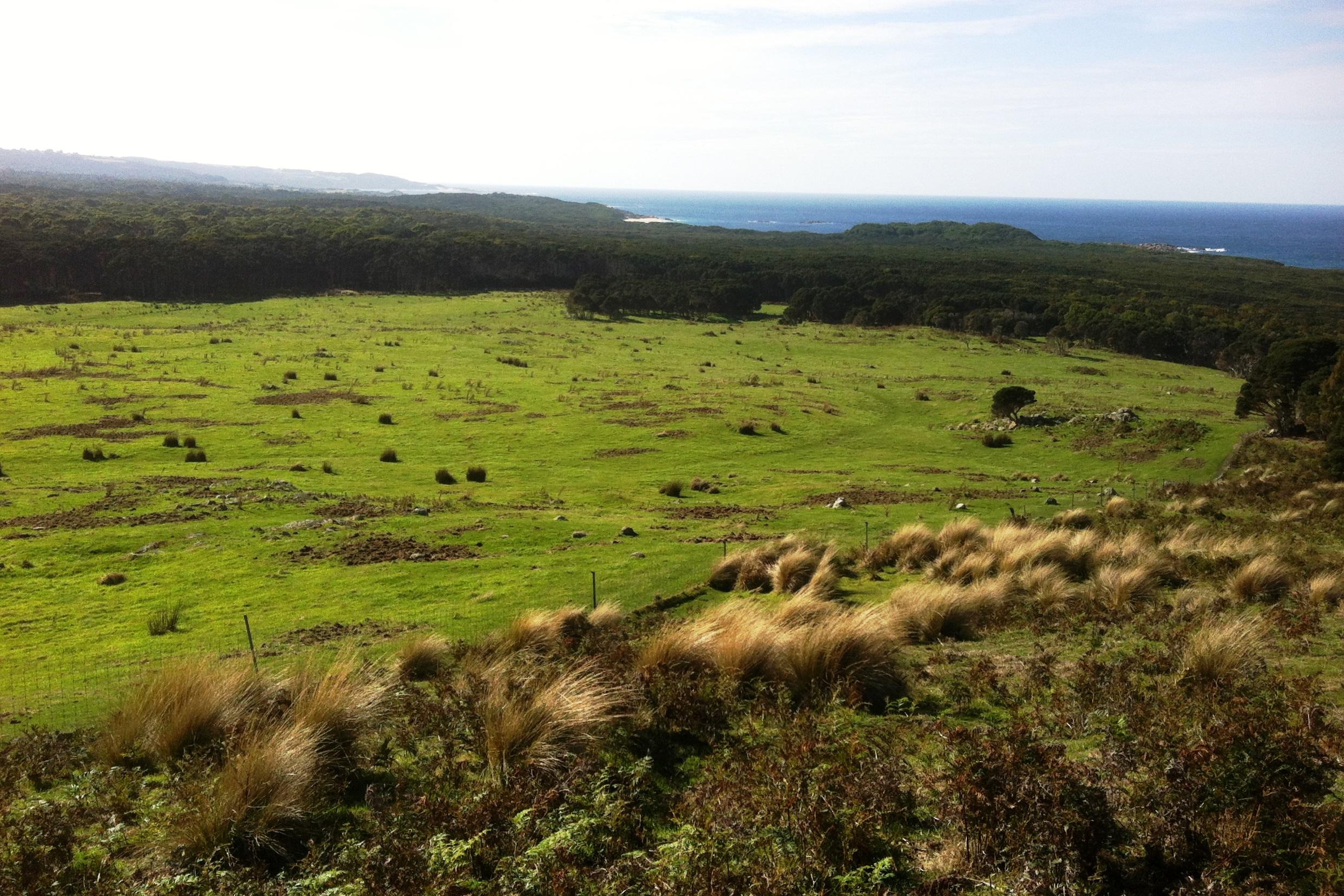
SPANISH HEATH (Erica lusitanica)-
we need your help
The project will map Spanish Heath across these five north-west council areas, with the intent of following up with strategic onground weed control.
NRM staff at these Councils would appreciate support from the community in identifying known Spanish Heath locations within these municipalities as first step before systematic mapping begins.
Please report known locations of Spanish Heath via email to Sonya Stallbaum at Central Coast Council sonya.stallbaum@centralcoast.tas.gov.au. Please note the location of the weed (either GPS location or accurate description of municipality, road name and location on it), the extent of the infestation (single plant or area of infestation and % cover of that area).

For information about weeds and weed control methods: dpipwe.tas.gov.au/invasive-species/weeds
Spanish Heath
If you live in the municipalities of Devonport, Central Coast, Burnie, Waratah-Wynyard or Circular Head, we would love your help in mapping local infestations of Spanish Heath (Erica lusitanica).
Spanish Heath is an invasive and extremely combustible weed growing along nature strips, open areas and disturbed ground. It is a small to medium sized evergreen woody shrub which can grow up to 2.5 m tall in suitable conditions. Leaves are small, fine and pine like, 4-7 mm long. Young stems have unbranched hairs 1 mm long. It usually grows Display planter box at 14 days post seeding. as a dense multi-stemmed bush, however inappropriate slashing can thicken it up so that can becomes more hedge-like. It can even grow and flower as a prostrate plant in response to slashing. Each plant can produce millions of small seeds which can be dispersed by wind, water, animals, slashing equipment and farm machinery, vehicle tyres or shoes. Central Coast Council, in conjunction with Devonport, Central Coast, Burnie, WaratahWynyard and Circular Head Councils, has been successful in receiving a small grant from the Tasmanian Government's $5 million Weeds Action Fund.
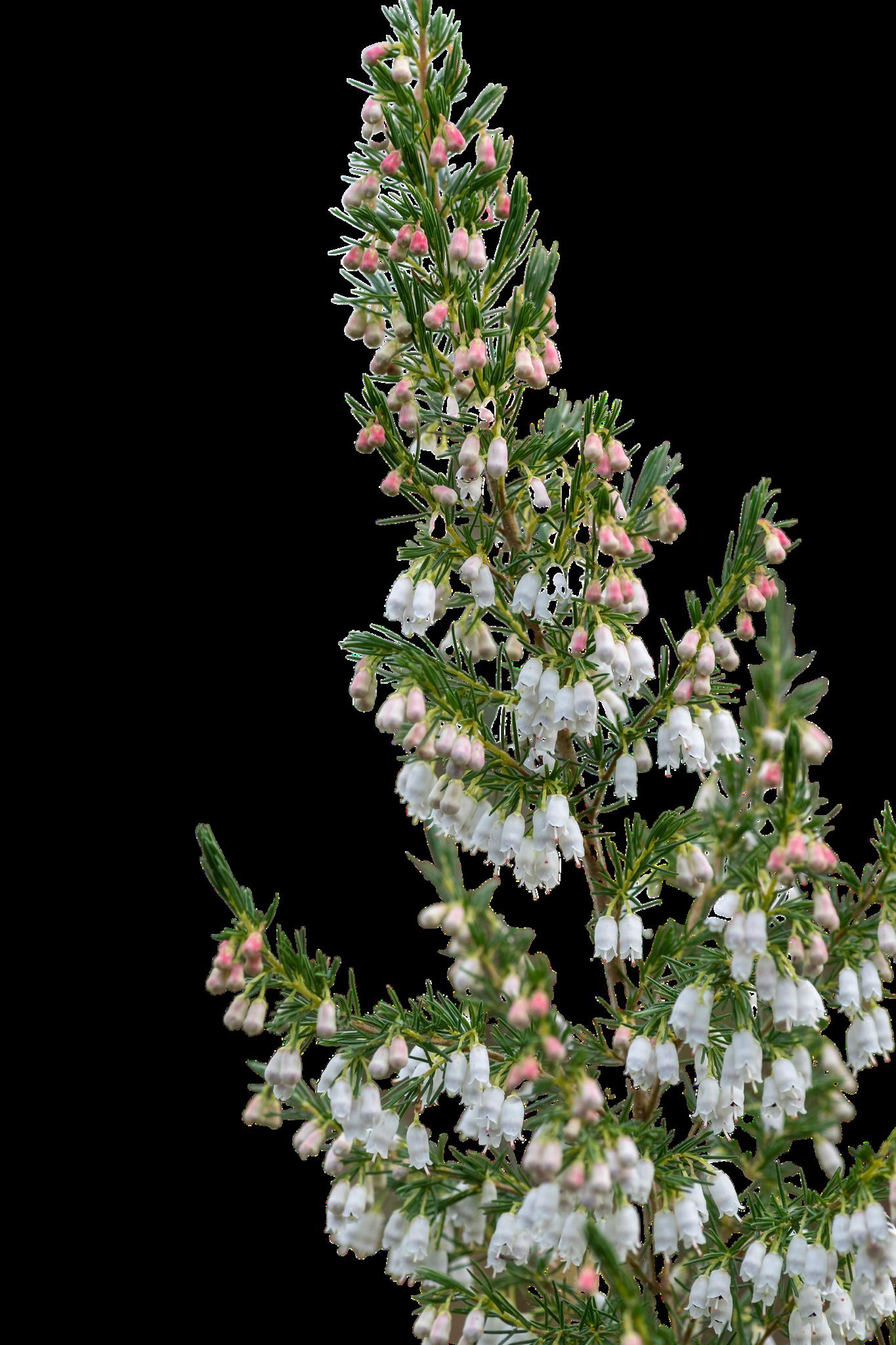
what Who and more info when
Clean Up Australia Day
Saltmarsh Field Day 'Conservation of Circular Head Coastal Saltmarsh'
Are You Bogged Mate? www.cleanup.org.au/community
A full-day event with morning tea and lunch included. Location: Hall of Fame, Circular Head Community Recreation Centre, 72 – 98 Nelson Street, Smithton Cost: $25 per person Please register to attend this event by email to gaildennett@gmail.com by Monday 8th of March.
Helping Rural Tasmania talk about mental health and suicide while spreading awareness about depression in the bush. Cost: FREE (tickets essential) Visit www.bootsonthegroundtas.org for tickets and more info. Saturday, 7 March 2021
Saturday, 13 March 2021
Mount Hicks 16 March 2021
Forth 16 March 2021
Forest 17 March 2021
Devonport Electrikhana
Giant Freshwater Crayfish and their habitat, Field Tour Your chance to ride in, or even drive, an electric vehicle! Location: Devonport CBD, Multilevel Carpark For more information visit www.aeva.asn.au/events/157/
Location: Meet at Moorleah Hall, 720 Preolenna Road, Moorleah. Cost: Free (RSVP essential) For more info or to RSVP, contact Fiona Marshall on 0413 382 390 or fmarshall@cradlecoast.com Saturday, 21 March 2021 10am - 4pm
Wednesday, 24 March 2021 9.30am - 12.30pm
Ecofest 2021 'A new vision' Location: Ulverstone For more information contact the North West Environment Centre - secretary@nwec.org.au Saturday, 10 April 2021
EventsAg Innovation Expo; Soil health, Location: Hagley Farm School Wednesday, 14 April 2021 Machinery, Virtual Reality in Ag For more information contact Terry Brient, TAPG terry.brient@gmail.com 1-3 Spring St, Burnie, Tasmania, 7320 03 6433 8400 www.cradlecoast.com www.facebook.com/CradleCoastNRM/











